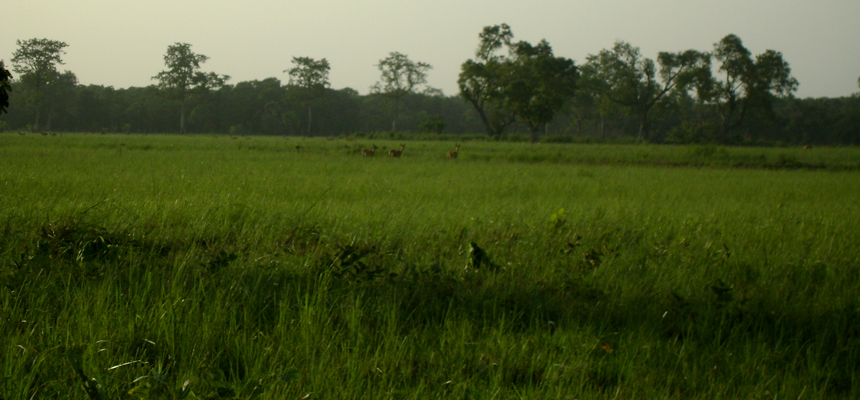Suklaphanta Wildlife Reserve is situated in the southern Terai of Far-Western Nepal and was gazette as a Wildlife Reserve in 1976, covering an area of 305 sq. km. The reserve shares a common boundary with the Indian state of Uttar Pradesh in the south and west which is formed by the Mahakali (Sarda), River, and a major tributary of the Ganges. It is bordered on the eastern side by the Chaudhar River and to the north by a forest belt and cultivations. A total of 24 mammal species was recorded by Schaff (1978), a total of 350 species of birds of which 180 are breeding species (In skip, 1989), Bhatt and Shrestha (1977) provide an annotated list of 14 species of fish, Schaaf (1978) recorded 10 species of eco parasites and biting flies.
Although the area of the Reserve is small, it supports a wide range of biodiversity which is nationally and globally important. The vegetation types primarily include sal forest, sal savanna, which is part of continuum between climax forest and grassland that is maintained by fire and floods. The reserve provides prime habitat for swamp deer, with an estimated population of 2000 found here. Other animals in the reserve are wild elephant, tiger, hispid hare, blue bull, leopard, chital, hog deer and wild boar. Many grassland birds along with the endangered Bengal florican can be seen in the phantas. Marsh mugger, Indian python, monitor lizard, cobra, krait and rat snake are recorded here.


Comments